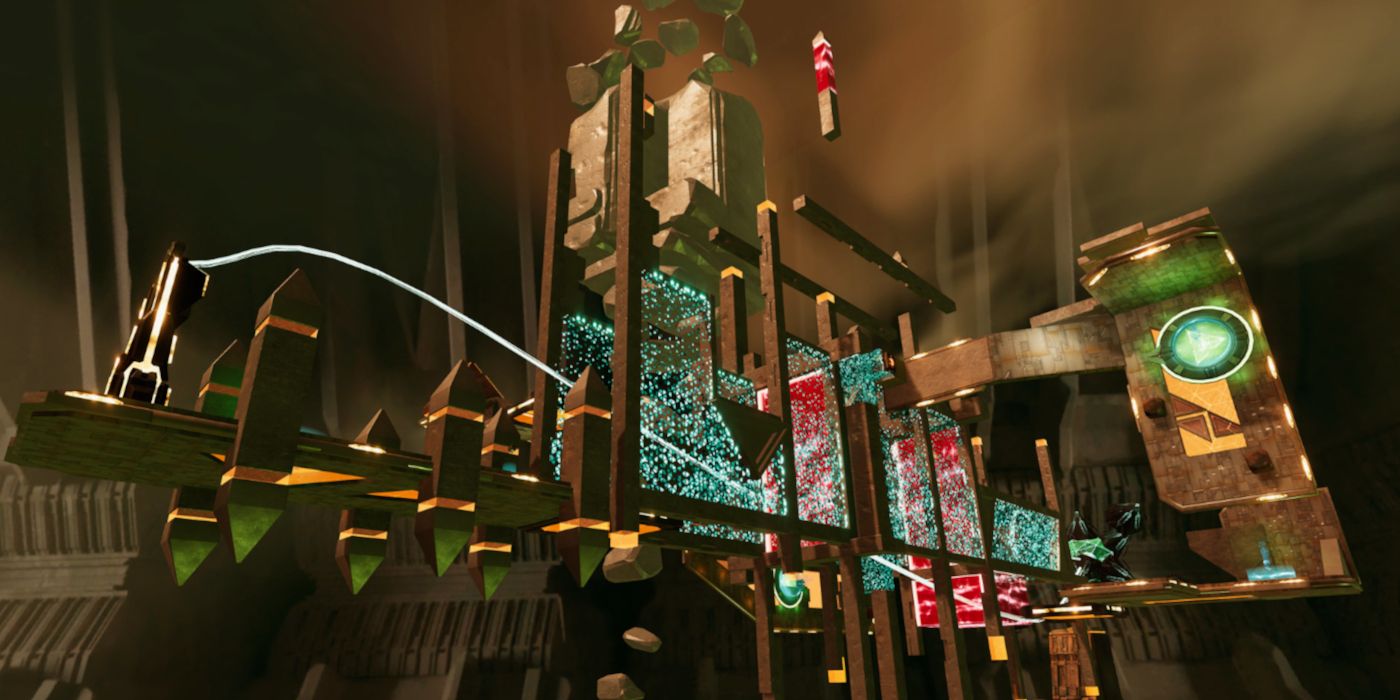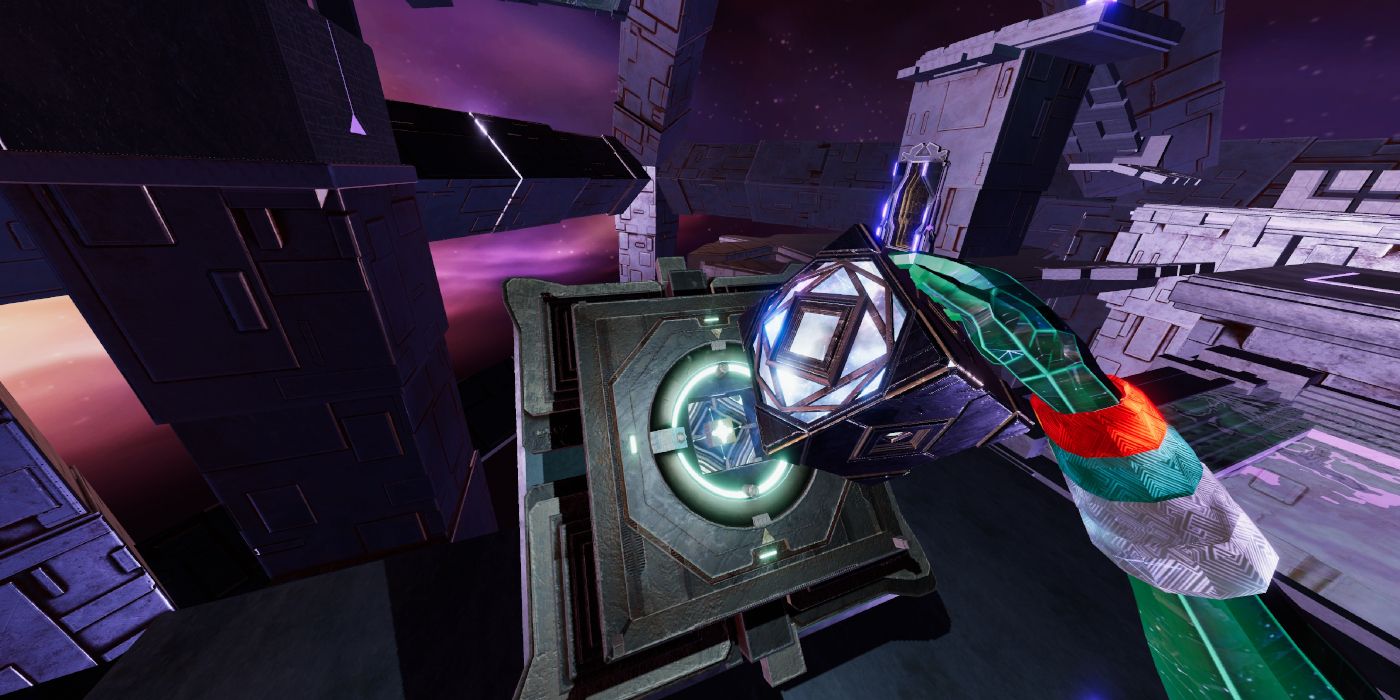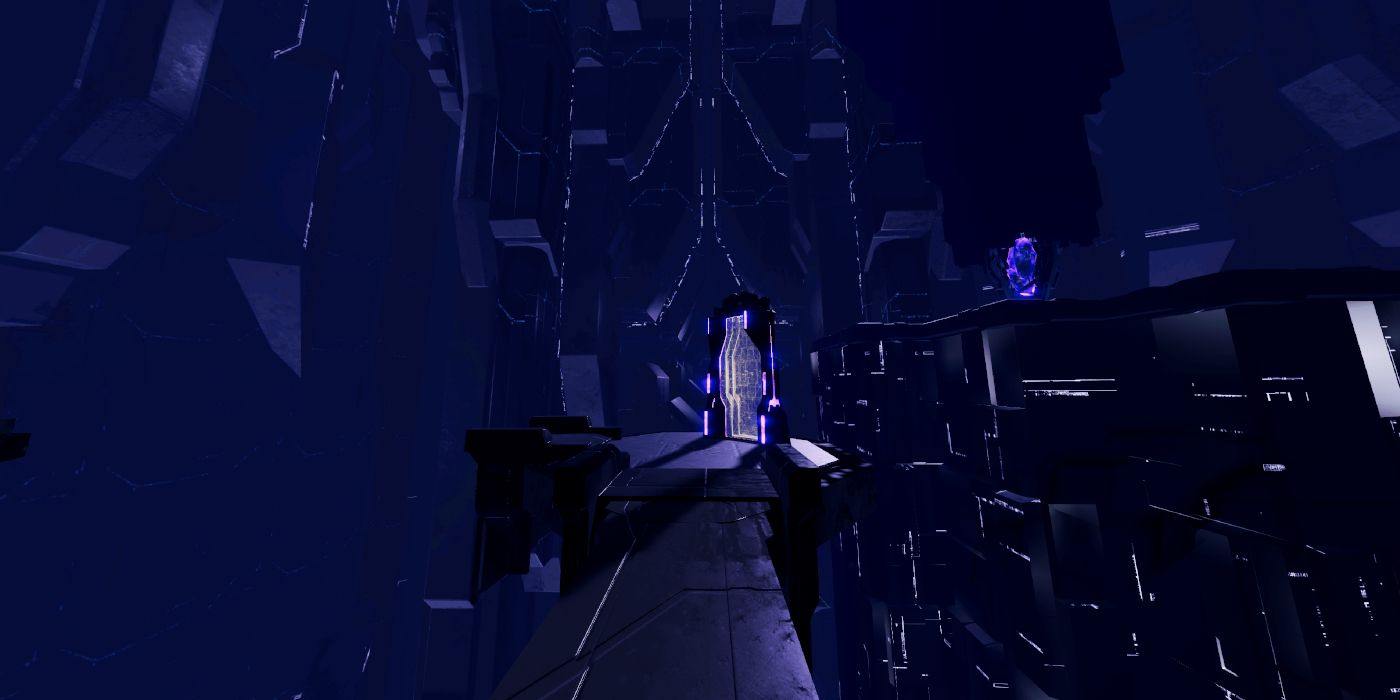Puzzle games and VR have been a strong match since the newest phase of the technology, mainly because the more methodical nature in the genre lends itself well to a lack of overall precision and fidelity with the hardware. Transpose is a recent VR entry in this mode, but takes a significantly more complex path than most VR puzzle game players might be accustomed to, making fine use of modern puzzle tropes and wisely playing to the platform’s strengths.
The plot in Transpose is fairly gaunt, with the player thrown into a geometric cyber-themed world of portals, monoliths, and yawning walkways with little context. A brief but eerie intro positions the player in a huddle of red avatars, all of whom move their arms in a mirrored response to your own. Interestingly, this isn’t used simply for novelty’s sake — it’s a key reference to the meat of the game, which leads players to manipulating recorded clones to traverse simple block/key puzzles that quickly become fiendishly complex.
Related: Underworld Ascendant Review - Avoid This Hell
For those who remember The Swapper, Transpose introduces a somewhat similar central mechanic. Any time a player’s copy is destroyed, whether by deliberately self-destructing or falling off a ledge, you’re granted the option of keeping or discarding this copy. The level might be fully reset, along with any flipped switches or changes already made, but the active copy will go about repeating all previous actions alongside any new ones made by your fresh avatar. By obtaining “power cores” from preset clones placed in the level or by interrupting a previously created copy, players can create multiple automatons and watch as they repeat their paths and actions, effectively working alongside them to successfully solve a given level.
It all gets impressively elaborate, but the main hook of Transpose results in some truly magical puzzle game moments. Very early on the player is taught the value of throwing a block over a chasm, so that it can be easily collected by the regenerated avatar. Before long you’ll actually be tossing blocks to yourself, nimbly catching them out of the air and slam-dunking them into the level-completing node in a simple but incredibly satisfying flourish. Furthermore, the act of simply watching a clone stand in place and stare mystified at the level around them — in other words, thinking about how to solve the puzzle, since that’s what you were doing moments ago — is absolutely uncanny, the type of sensation that can only really be experienced on a VR platform.
Transpose makes for an excellent fit when considering the decided limitations of PlayStation VR, given that the graphics are somewhat secondary to the puzzle design. Textures are certainly low on detail, but this also helps to articulate which parts of the environment are interactive and relevant, so players don’t spend undue time fussing with meaningless architecture. Tutorial messages and bespoke clones appear in certain levels to teach players the potential choices and interactions available to them, but the training wheels are simply there in preparation of mechanics like clone-destructing barriers and gravity-shifting that subvert formerly reliable solutions.
Furthermore, the free range of movement allows for a small amount of brute-forcing. There aren’t any invisible walls put up, so players can always plummet off of platforms and experience that hair-raising VR-fall at any time, then use the teleport movement to jump to a nearby platform. Players can also navigate freely by pressing the central VR move button, which ambulates straight ahead in whatever direction they’re facing. This usually works well, but expect to get spun around when playing the game in a standing position while avoiding snap-turning — the developers seem to have predicted this, because a non-obtrusive message quickly appears whenever you’ve turned 180 degrees.
Despite the limited palette, low-rez textures, and somewhat blandly ambient soundtrack, Transpose has an impressive and spacious sense of design, full of unnerving heights that feel risky to stare down. Above the portal to each level is a massive geometric shape that explodes into a gratifying laser show on room completion, a nice touch that autographs each success and never grows old. Every new level also comes with its own enigmatic title card and message that hints at a wider narrative, but the game never seems to pursue these to a fully-baked philosophical conclusion, which is just as well.
For its low price and density of content, Transpose feels like a high-value purchase, and it’s possibly one of the most successful VR puzzle games on Sony’s platform to date. The mechanical simplicity of the controls and style allows the level design to shine, and a fast-forward feature means that players don’t need to wait too long for the clones to complete their tasks. Additionally, with approximately 8 to 10 hours for completion, the experience doesn’t overstay its welcome and can be comfortably surmounted in a few sessions. Even in the case of players who normally don’t take to puzzle games, it’s hard to deny the simple wonder of playing catch with yourself.
More: Fallout 76 Review - A Risky and Rewarding Post-Apocalyptic Camping Trip
Transpose is available now on PlayStation VR, HTC VIVE, and Oculus Rift for $19.99. Screen Rant was provided a digital PlayStation VR code for this review.



